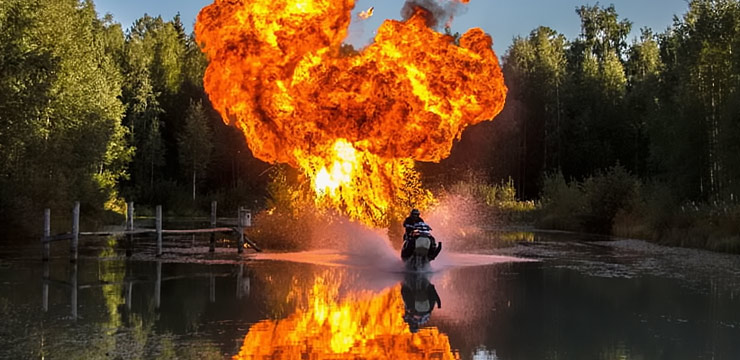

The difference is the volume (=dosage) in each of these size fractions. Not that both of these sprays contain small and large droplets. Size distribution (by volume) of two spray qualities. The main difference between sprays is the proportion of their volume in any given size fraction, with low-drift sprays having less of their volume in the drift-prone sizes. Droplet sizes in spraysĪll nozzles produce a wide variety of droplet sizes ranging from 5 µm to 1000 µm in diameter. Always check with nozzle manufacturer information to learn what spray quality is produced by the nozzle you’re using – this will vary with nozzle type, flow rate, and spray pressure. Higher volumes (12 – 15 US gpa) may be needed to obtain coverage in dense canopies. Lower pressures (down to 40 psi, Coarse to Very Coarse spray quality) are sufficient for systemic broadleaf products or when additional drift control is necessary. Increases in pressure above 60 psi (for finer droplets, Medium to Coarse spray quality) and volume to at least 7 to 10 US gpa (for better penetration) with this nozzle optimizes performance for grassy weeds. Low-drift nozzlesĪ low-drift nozzle can be used for most applications, as long as small adjustments are made for specific conditions. In these cases, a number of different droplet sizes will be required. As a result, the same spray operation has to be effective on grass weeds and broadleaf weeds, some of which may be near the top of the canopy, or be more mature, whereas others may be just emerging. Most herbicides are either broad-spectrum, or are tank mixed to target both grass and broadleaf weeds. In practice, an applicator rarely encounters just one type of targeting situation. Herbicide modes of action, minimum water volumes with low-drift nozzles, and maximum spray quality

For any specific herbicide, use the higher volume with coarser sprays. With tank mixes, such as glyphosate and Heat or AIM, the higher water volume and finer spray criteria should be used. Typically, contact modes of action and grassy or difficult-to-wet targets require somewhat finer sprays and higher water volumes (Table 1). The third criteria, maximizing the performance of specific pesticides with droplet size, is more complicated. Higher water volumes have the advantage of allowing larger average droplet sizes to be used, minimizing evaporation, drift, and enhancing deposition. Taken as a whole, the exclusive use of finer droplets can be counterproductive due to evaporation and drift. Providing the same droplet number to each of the regions in the second case will require more droplets, and therefore more volume. In the first case, the canopy can be described as being in a single plane near ground level, with leaf areas of target plants fully exposed and with an LAI of >1.

To put this in perspective, consider a pre-seed burnoff or an early post-emergent herbicide spray vs. Leaf Area Index (LAI), defined as the total leaf area per unit ground area, is a good indicator of canopy density. The more leaf area to be covered (i.e., the taller or denser the crop canopy), the more droplets will be required. We need to get the right number of droplets to the target. For example, penetration of dense broadleaf canopies, or coverage of small targets like stems is best achieved with smaller droplets, while larger droplets are useful for penetrating grassy canopies or targeting the top of a broadleaf canopy. Larger droplets clearly reduce drift, but may bounce off the target and offer less coverage per water volume.ĭroplets of various sizes are actually important to cover all parts of a target, so we shouldn’t eliminate all the small ones. Small droplets move off-target easily, they also evaporate to dryness very quickly and may not have the expected performance as a result. Droplet size is important for minimizing both spray drift and droplet evaporation. Let’s start with the first criteria, reaching the target.


 0 kommentar(er)
0 kommentar(er)
